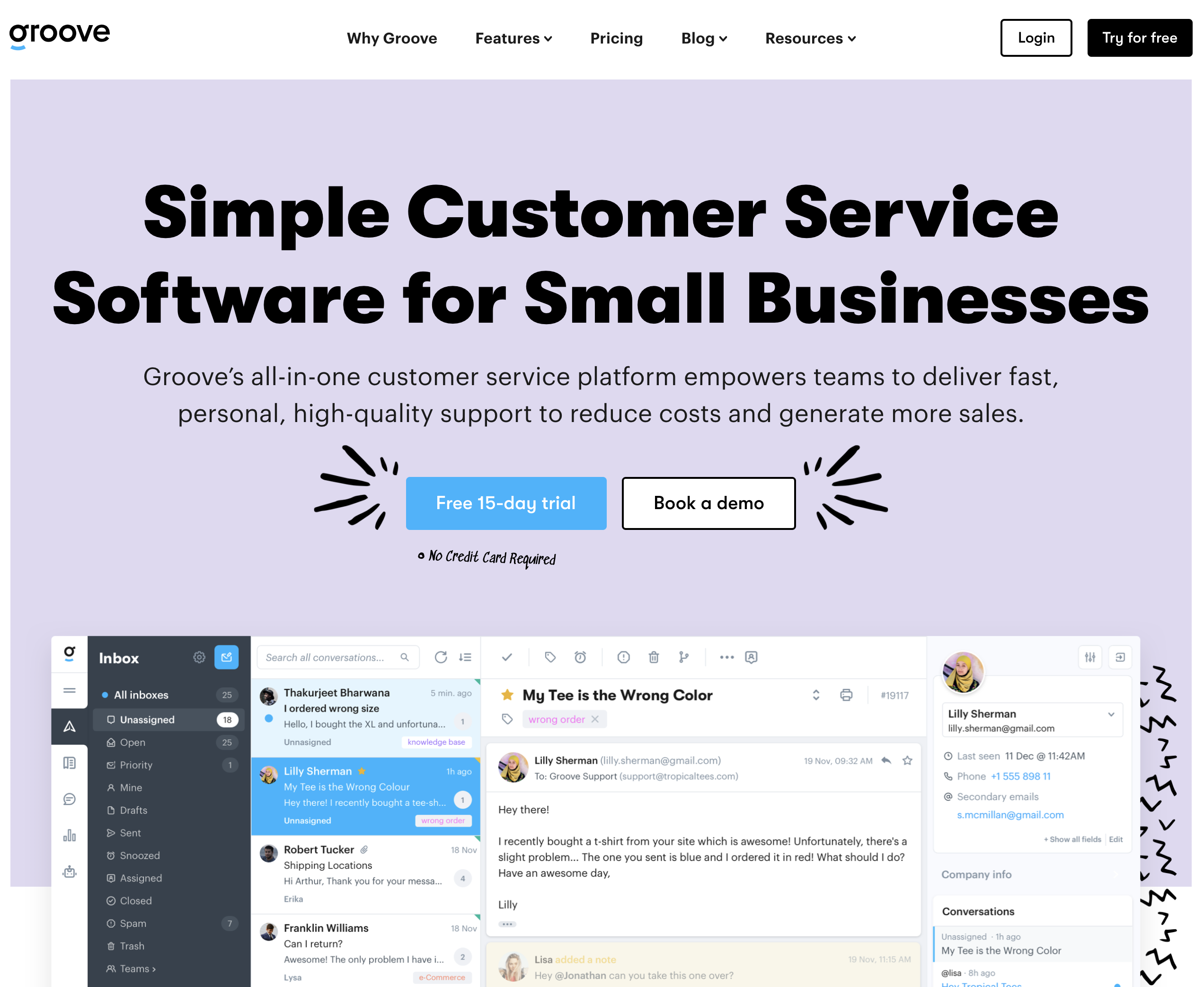I see a lot of images of goldfish in bowls when looking at articles online about SaaS churn, so it seems fitting to use a goldfish analogy to explain how churn works.
You’re 6 years old. You just won a goldfish at the local fair (I feel like this wouldn’t happen anymore these days, but roll with me here).
You get home, put it in a questionable glass bowl, and then completely forget about it for a few days. Your mom realizes it’s dead before you do, so she buys another 30 cent fish from the pet store and replaces it.
SaaS Businesses tend to do this with customers. Rather than nurture existing customers while gaining new ones, they let the first ones leave and then just replace them with new ones.
This goes on for years, fish dies, mom replaces. The whole time you’re none the wiser because apparently you can’t be taught responsibility for caring for a pet. At some point, the pet store is going to stop selling your mom fish because they realize they are sending their innocent scaly babies to their death.
Basically, the customers stop coming because they become wise to your game.
Think about it: you could have educated yourself on goldfish husbandry, and had a nice big tank with like 20 goldfish, all swimming around happily as you stand back and admire how far you’ve come—from putting an anemic goldfish in a dollar store fishbowl to nurturing and growing an army of thriving shimmery orange sea creatures.
Stop the cycle of violence. Read this guide on churn rate, up your SaaS marketing game, and build your customer base.
While you’re at it, this is your reminder to feed your damn goldfish.
What is SaaS Churn Rate?
SaaS churn rate refers to the percentage of customers who cancel their recurring subscription service. Knowing your churn rate is extremely important for understanding the probability of customers that may cancel their subscriptions, as well as revenue forecasting.
But SaaS businesses are notorious for ignoring their churn rate. It’s like, if I don’t see it, it’s not illegal.
It sort of makes sense, though. As a business, you’re focused on obtaining new customers and increasing revenue. But if you’re ignoring your customers once you get them, then they’ll just leave and you’ll have to find even more new customers.
Sounds exhausting, right? That’s because it is, and it’s a bad way to do business. So it’s time to put your big kid pants on and face the churn head-on.
Why Measuring Churn Rate is Important
Measuring churn rate is important because it tells you if your business is profitable or not, and it also gives you insight into how much your customers like you.
The goal is to grow your SaaS— have a steady revenue stream coming in from subscribing customers, while still having new customers subscribing to your service.
Just take a look at the below stats on churn if you still don’t think paying attention to it is important:
- Increasing customer retention rate 5% can increase your profits by 25%-95%
- The probability of an existing customer converting is 60-70%, but the probability of a new customer converting is only 5-20%
. High churn means more money spent acquiring new customers, and more work for your marketing and sales teams as they try to convince new customers to sign up.
As the old adage goes, it’s easier to keep current customers than to find new ones.
What is the Average Churn Rate for SaaS?
3-5% is the average churn rate for SaaS businesses, but that doesn’t mean if your churn rate falls within that average, it should be ignored.
When your business model is to sell subscriptions and keep current subscribers happy, keeping a close eye on why people stay or leave is basically the foundation of your business. That’s where customer churn rate comes in as a measurable metric.
3 Ways How to Calculate Churn Rate SaaS
There are a few ways to calculate customer churn rate for SaaS, and we promise that it’s worth doing at least all three. By using these three calculations to understand your churn rate, you’ll get a clear picture of not only how many customers are staying and leaving, but also the effectiveness of your sales and marketing efforts.
1. Customer Churn Rate Calculation
|
Churned Customers divided by Total Customers (within a given time frame) = Customer Churn Percentage |
For the time frame in this calculation, you can basically choose any length of time you want. Most companies focus on month-to-month, but that’s actually a mistake. Only focusing on month-to-month in your calculation means you’re not seeing the whole picture. Make sure to calculate the Year over Year (YoY) churn rate as well, in order to see the effects of things like churn seasonality.
What’s churn seasonality? Consider video content streaming apps like Netflix, Amazon Prime Video, Crave, etc. They probably experience seasonal churn, and it could be tied to factors like fewer people staying inside and watching movies or TV shows during the summer. But during the winter months, subscriptions increase again.
That’s why focusing on one time period in your churn calculation won’t give you the whole picture. Going off the streaming service example, If you’re doing a month-to-month calculation in the summer, it might look like the churn rate is high. But once winter rolls around, more people are sticking around, so the churn rate decreases.
There could be other patterns that you recognize as well. Look at Crave TV. 2.75 million Canadians watched the (disappointing) season finale of Game of Thrones on the platform. It makes you wonder though, how many people canceled immediately after they finished watching (I did).
Remember that subscription retention can be affected by a lot of factors. Depending on your business, you’ll start seeing different patterns that can give you a lot of information on why customers are staying or canceling.
2. Revenue Churn Rate Calculation
|
Churned Monthly Recurring Revenue (MRR) divided by Total MRR = MRR Churn Percentage (the percentage of monthly recurring revenue you lose from cancellations) |
With most SaaS businesses, customers are paying different rates depending on what subscription tier they chose. Looking at the customer churn rate on its own doesn’t tell you if a customer who pays $5,000 per month left versus a customer who only pays $50—and although both are valuable, you’ll probably be hurting more at the loss of the higher paying customer.
Using the MRR Churn Rate calculation helps you focus on different types of customers, and helps you maximize business value.
If the MRR Churn Percentage is lower than the Customer Churn Percentage, then that means you’ve done a better job of retaining higher-value customers.
3. Customer Acquisition Costs (CAC) Calculation
|
Sales and Marketing Costs divided by the Number of New Customers Acquired = Customer Acquisition Cost |
CAC helps you figure out if your business is spending way too much or way too little on marketing and sales efforts. While sales and marketing costs are near the top of the budget for many companies, you want to make sure you’re getting the most out of those dollars spent.
Measuring the success of your SaaS inbound marketing efforts in acquiring new customers also helps you figure out if you need to continue or readjust your marketing strategy.
The goal of most companies, SaaS or otherwise, is to reduce the cost of acquiring new customers. Being able to do so successfully is an indicator of the health of your sales, marketing, and customer service teams.
How to Reduce Churn Rate for SaaS (With Real Examples)
Basically, everything your company does to create and manage its reputation and perception with new and existing customers, both online and offline, affects churn. That might be easy to say and understand, but it can be difficult to execute specific strategies to reduce your churn when you’re faced with such a broad reason behind what makes customers stay and leave.
To make things easier, here are three actionable strategies for reducing churn, proven with real-world examples.
1. Provide better customer service
Especially with a subscription-based product, customers don’t want to just buy and never interact with you again—they want to know that you’ll be there for them if they have a problem that needs to be solved.
Since customers are paying you for a subscription, they want you to hold up your end of the bargain and provide good customer service and an excellent product.
According to Semrush, on average, a loyal customer spends 67% more in their 31st to 36th month with a brand than in their first six months of the relationship.
That’s just one stat that hammers home the importance of keeping customers around with quality support.
To improve your customer support, start by focusing on potential pain points:
- Are your support reps engaging with customers fast enough? i.e. answering phones in a timely manner, actively responding to emails, regularly checking online chat queues
- How many support interactions on average does it take for your customers’ problems to be solved? If a customer has to reach out multiple times or they have to repeat their problem to multiple people before being helped, that’s a no-go for a good support experience
- Are your reps actively listening to customers, friends, and committed to solving issues? If reps are interrupting customers before they finish a sentence, or assuming what a customer is saying before they say it, that can lead to misunderstandings and bad experiences
But don’t just take our word for it, look at how Groove reduced churn by 71% by focusing on why customers quit using their help desk app.

Through research, Groove found out that offering help to users through their setup process and following up with users who logged into the app fewer than 2 times during the first 10 days increased the number of users beyond 30 days, when before users were dropping before the 30 day period.
2. Offer incentives for referrals
Everyone likes discounts and free stuff, that’s a fact that doesn’t need research. If you don’t like discounts or free stuff, you might just be a billionaire that literally no longer understands currency and how it works. For a billionaire, a loaf of bread could cost anywhere from $2 to $50, but they don’t have to care which one it is.
For the rest of us peasants, bring on the discounts and free stuff. Admit it: if a friend forwards you a discount code or opportunity for a free thing if you sign up or purchase something from a company, there’s a high chance you’ll do it.
Just take a look at Dropbox. By implementing a referral program, Dropbox was able to increase its users from 100,000 to 4,000,000 in 15 months.
The best part about referral programs is that both the new and existing customers get a bonus (in Dropbox’s case, 500MB of free extra storage each), the company gains a new customer, and everyone wins.
3. Create a loyalty program
Loyalty programs are a great way to show appreciation to your current customers, while at the same time encouraging them to continue buying over time.
Back in the day, businesses competed for space in customer’s wallets with loyalty cards, but these days customers don’t typically need anything other than their email or phone number to take advantage of the sweet deals that a loyalty program offers.
Although it’s easier to convince someone to sign up for a free membership rather than a paid one, it might be worth looking into a paid version of your loyalty program. According to a McKinsey survey on loyalty programs, members of paid programs are 60% more likely to spend after subscribing, while in contrast free programs only increase the likelihood of spending by 30%. Something to keep in mind for sure when creating your own program.
Starbucks loyalty program is a great example of customer retention. Over a period of two years, membership has grown more than 25% and the ~16 million members account for about 40% of sales at US Starbucks stores.
If that doesn’t convince you to start a loyalty program for your business, we don’t know what will.
How to Improve SaaS Churn Rate
Customers can cancel services for any number of reasons, and it can be difficult to pinpoint exactly what those reasons are. Regardless, we know that churn has a big effect on a company’s bottom line, so taking the time to do a bit of digging and find out the individual reasons why your customers are jumping ship is absolutely worth it.
Stay above water with these ideas on how to reduce churn for your SaaS business:
1. Subscription length
The length of your subscription service and whether it makes sense to your customer base is an important consideration. It makes sense to have an annual subscription for cloud-based CRM software, and less sense for it to be month-to-month only.
Month to month may be an attractive option for gaining new customers, as it’s a cheaper option than an annual subscription and doesn’t require a lot of commitment. But that’s just it—nearly 40% of users of any service cancel their subscription, with one-third of those users cancelling in less than three months.
Creating a balance between attracting new users and keeping them is a delicate process of managing your SaaS pricing. This is why a lot of subscription companies will coax customers along with a free trial, then the option of a monthly or annual subscription. A free trial helps demonstrate the product’s value and gives the customer the opportunity to try out the software before purchasing.
Subscription service example from Copper CRM. Source
2. Poor onboarding process
If a customer is frustrated with the software before they even have a chance to really get to use it, of course, they’ll quit and move on to something else—unless they have onboarding support.
Onboarding processes can look different for different SaaS companies, but there are a few fundamental best practices to keep in mind:
Product considerations and segmentation
Customers will need different types of support, depending on their level of tech-savviness and how complicated your product is to use.
One easy way to determine how much support a new customer will need is to weave in a couple of questions into the sign-up process to gather information about user goals and priorities.
Basecamp signup process. Source
By asking just a few simple qualifying questions, you can determine the best next steps in helping your user with onboarding.
Welcome email
Once your customer signs up, the next step is to send out a welcome email. Welcome emails should be simple, have a nice layout, and clearly communicate things like:
- Your company’s value proposition
- Where your customer can find resources—this could be FAQs, cheat sheets, blogs, or other helpful content that you’ve produced
- A thank you message for signing up
- Some short and sweet information about your company, such as a mission statement, contact information, helpful links, etc.
Example of a welcome email from Airtable.
First login
When a user logs into your app for the first time, you want to make sure they feel welcome and confident about using your software. A simple welcome splash screen guiding them through a first task can be a great way to introduce your new user to the functionality of your app.
Grammarly’s first login screen. Source
3. Not effectively communicating value
Customers aren’t going to subscribe to your software just because it’s there, they have to see the value in it. Communicating value can take time as you build up your company’s reputation, but there are a few best practices you can follow.
- Understand your customers and what their needs are. By conducting user research, or even just asking your existing customers a few questions about how they use your product, you can build a customer persona (or personas) to help
you define the customers who buy your products.
- Determine the problem your product solves for the user.
- Create a lasting first impression. Consider what your customer’s experience will be from start to finish with signing up, onboarding, and starting to use your software. Are there gaps in the process that need to be addressed that could improve the customer experience? User testing can identify some gaps, but it should be an ongoing process of examining user flow to continually improve your product.
Key takeaways
If you run a SaaS company, measuring customer churn rate is a must to ensure the profitability of your business. Using a variety of churn metrics instead of just one will help you see a full 360-degree view of your company’s performance, and help you determine where you need to focus your attention for improvements.
The key takeaways for reducing churn are to provide a good experience right from the beginning, through enticing subscription models that make sense for your business and the industry you’re catering to, and a solid onboarding process and continual support for your customers along the way as they dig deeper into your software.
Reducing or preventing churn is the responsibility of everyone in the company, from your sales and marketing teams to customer support. When everyone works together at reducing churn, you’re sure to see happy customers and lasting subscribers.

Lisa Hoffart
Lisa Hoffart is a professional writer with several years of experience crafting well-researched content for a wide variety of industries, from legal, real estate, technology, and more. Lisa is a huge technology geek that loves video games and computers. In her free time, Lisa enjoys sewing, crafting, and hanging out with her cat.












2.png)
2.png)









